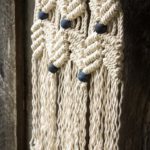At the point when a hydraulic framework falls flat, discovering the wellspring of the issue can be a test. However hydraulic systems fundamentally comprise a sump, engine, siphon, valves, actuators and hydraulic liquid, any of these parts could be the wellspring of failure. That is also the extra potential for failure through human mistake and flawed upkeep rehearses. On the off chance that your framework comes up short, you need to know why it falls flat, how to discover the failure and how to keep it chugging along as expected later on, all while guarding faculty.
1. Tackling the issue of Air and Water Contamination
Air and water pollution are the main sources of hydraulic failure, representing 80 to 90% of hydraulic failures. Broken siphons, framework breaks or temperature issues regularly cause the two sorts of tainting. Air defilement is the passage of air into a hydraulic framework and comprises two sorts — air circulation and cavitation. Both can seriously harm the hydraulic framework over the long run by wearing out the siphon and encompassing parts, polluting hydraulic liquids and in any event, overheating the framework. In spite of the fact that we are not siphon makers, we realize it is fundamental to know about these sorts of tainting and how to recognize their side effects.
- Cavitation: Hydraulic oil comprises about 9% broken down air, which the siphon can pull out and collapse, messing the siphon up and harming the siphon and to different parts in a hydraulic framework over the long run. You can recognize this issue if your hydraulic siphon is making a crying commotion.
- Air circulation: Aeration happens when air enters the siphon pit from an external source. Normally, free associations or holes in the framework cause this issue. Air circulation additionally makes a sound when the siphon is running, which sounds like thumping.
2. Temperature Problems
Hydraulic systems that run too hot or too cold can cause extreme issues over the long run. A portion of these difficulties incorporate the accompanying side effects.
- Liquid diminishing: Heat can make hydraulic liquids flimsy, forestalling grease and making the liquid bound to spill.
- Liquid oxidation: Extreme warmth can make hydraulic liquid oxidize and thicken. This liquid thickening can cause developments in the framework that limit the stream, yet can likewise additionally lessen the capacity of the framework to disperse heat.
- Liquid thickening: Low temperatures increment the consistency of hydraulic oil, making it harder for the oil to arrive at the siphon. Putting systems under load before the oil arrives at 70 degrees or more can harm the framework through cavitation.
3. Liquid Levels and Quality
Liquid levels and quality can influence hydraulic framework execution. Low liquid levels and improper filtration can bring about air tainting, while liquid pollution can mess temperature up. Breaks can additionally worsen the two issues. Utilizing the right sort of liquid is likewise fundamental, as certain hydraulic oils are viable with explicit applications. There are even oil alternatives that offer higher protection from temperature-related issues. A few oils, many propositions hostile to wear and hostile to froth added substances to help forestall against wear and air defilement, individually.
4. Human Error
Human mistake is the base reason for some hydraulic framework issues. Probably the most widely recognized mistakes that might bring about your hydraulic siphon not building pressure incorporate the accompanying.
- Broken establishments: Improper establishment of any part in a hydraulic framework can bring about serious blunders. For instance, the siphon shaft might be turning off course, adversely influencing pressure development, or lines might be mistakenly fitted, bringing about spills.
- Contradictory parts: An unpracticed installer may assemble confused parts, bringing about practical failures. For instance, a siphon might have an engine that runs past its greatest drive speed.
- Ill-advised upkeep: Using systems outside their functional capacities or neglecting to perform standard support are probably the most well-known reasons for hydraulic framework harm, yet are not difficult to correct through refreshed upkeep arrangements and preparing.
Conclusion: The above are some of the common causes that are prevalent in the hydraulic systems if it fails. These are mentioned in no order of preference and if you encounter any of the above problems make sure to have it fixed timely. In case you are in the market looking for a Hydraulic jacking system, one must not miss out on Riverlake Hydraulic. They have a wide variety with high quality products.













